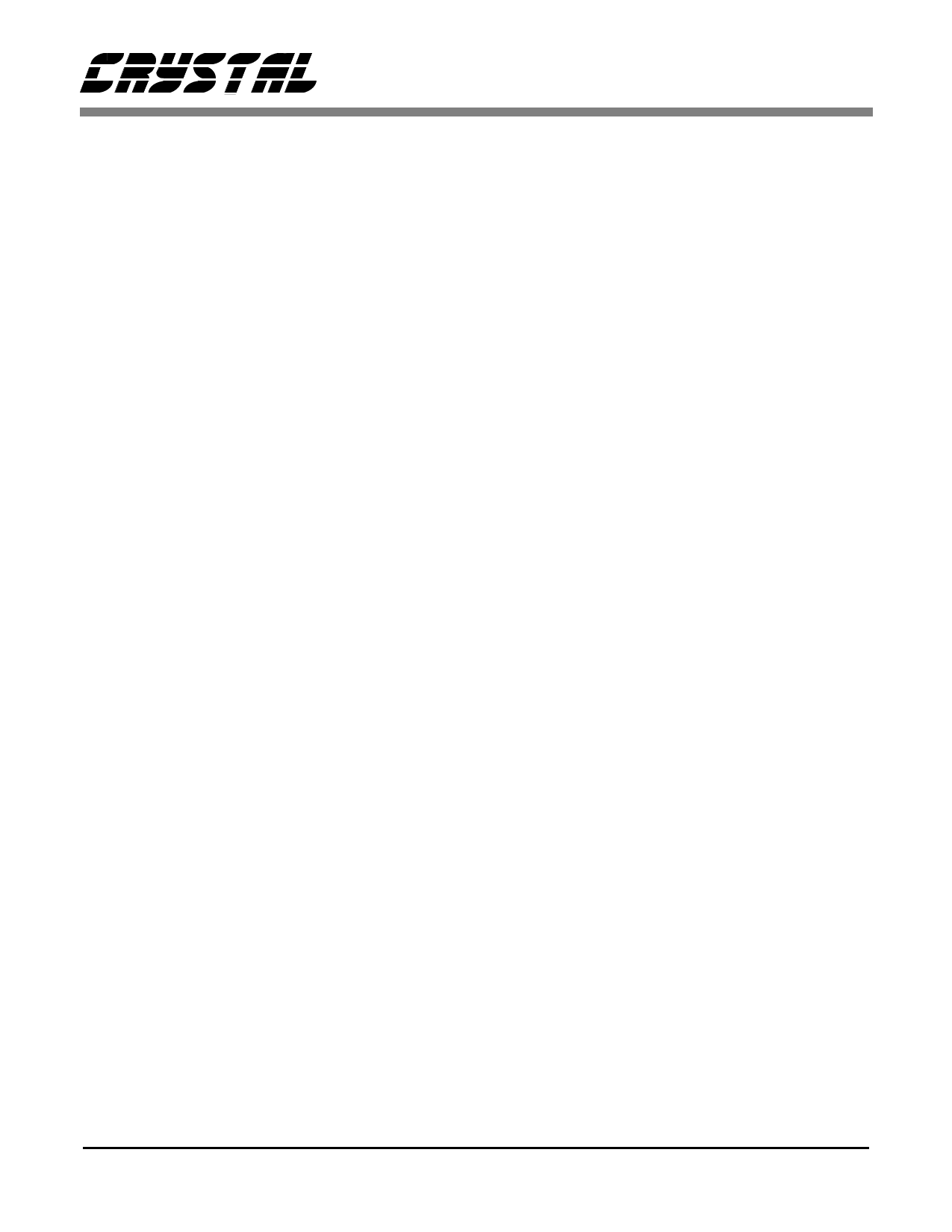CDB6420 Просмотр технического описания (PDF) - Cirrus Logic
Номер в каталоге
Компоненты Описание
Список матч
CDB6420 Datasheet PDF : 52 Pages
| |||

CS6420
Howling
In full-duplex operation, both the microphone and speaker are active at the same time, which,
in conjunction with the reflection off the hybrid, creates a closed loop. The signal coupling
between the speaker and the microphone can cause feedback oscillation or howling. This
happens when the coupling between the speaker and microphone is strong enough to increase
the system’s closed loop gain above unity.
Acoustic Coupling
The strength of the output signal from the speaker that is received at the microphone input.
Adaptive Filter
A digital FIR filter that adjusts its coefficients to match a transfer function, such as the echo
path between the speaker and microphone. The adaptive filter is able to compensate for
different and changing conditions, such as someone moving in the room.
Echo Path
The acoustic echo path describes the acoustic coupling between the speaker and the
microphone. It describes both the magnitude and delay characteristics of the echoed signal. It is
affected by the speaker, microphone, phone housing, room, objects in the room, movement, and
the talker. The network echo path is comprised of the transfer function between NO and NI.
Path Change
A change in the transfer function that describes the Echo Path. Changes in the acoustic echo
path are most commonly due to motion in the room or gain changes at an external speaker.
Network echo path is most easily changed by picking up an extension or hanging up the phone.
AGC
The CS6420 implements a peak-limiting Automatic Gain Control to allow a greater dynamic
range without clipping the signal. See the section on AGC in the Design Considerations
section for details on how it works.
Doubletalk
The condition occurring when both Near End and Far End talkers are speaking simultaneously.
ERLE
Echo Return-Loss Enhancement is the amount of attenuation of echo signal an echo canceller
provides (not counting Suppression) as measured in dB. ERLE is a measure of the echo
canceller’s performance. The larger the value for ERLE, the better the echo cancellation.
DS205PP2
35